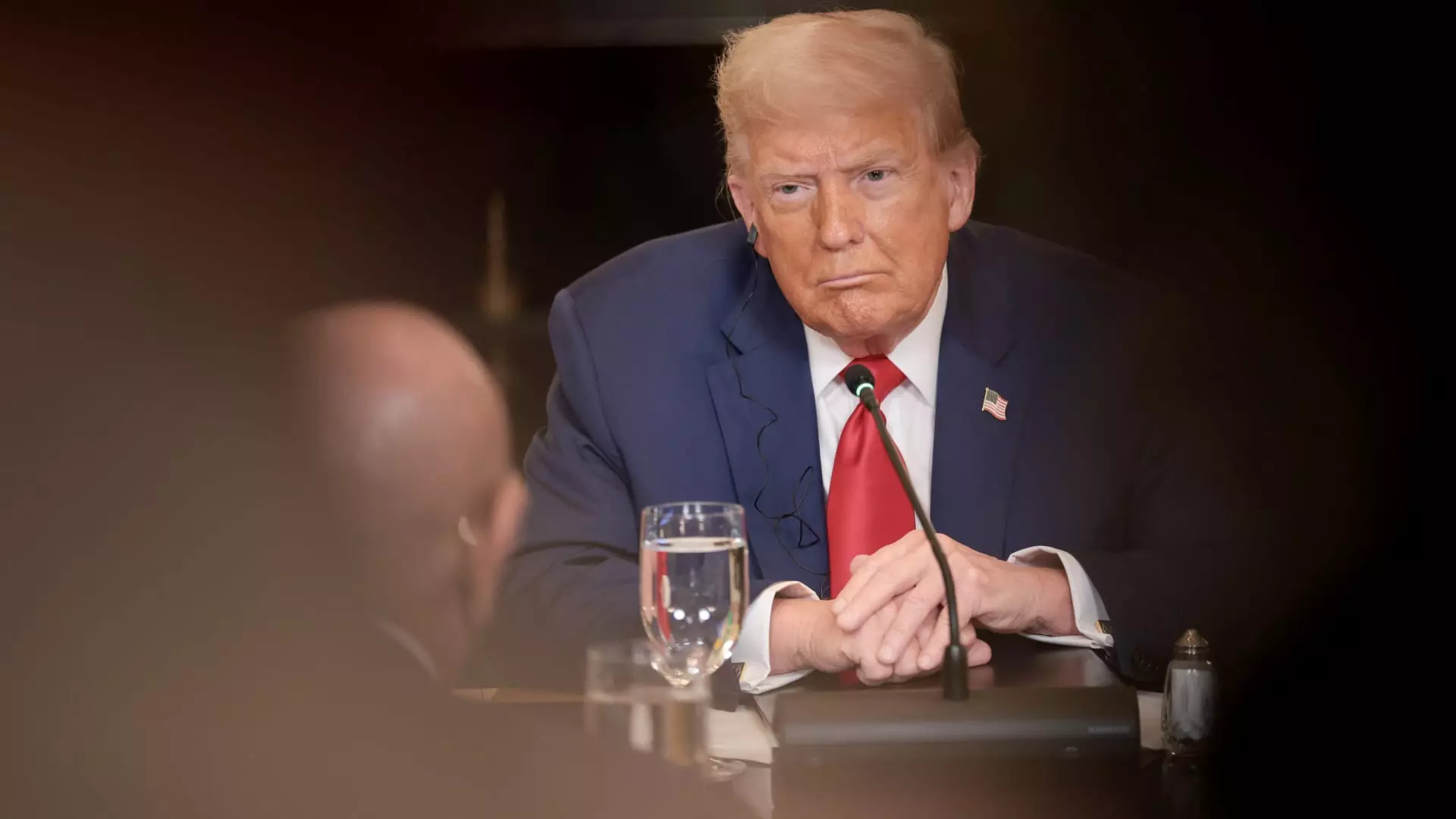In the labyrinthine world of US justice, the Jeffrey Epstein case stands out as a stark reminder of how power, privilege, and political motives intertwine, creating an environment where truth is often manipulated or obscured. When President Trump recently called for the unsealing of grand jury transcripts related to Epstein, it was more than a gesture of transparency; it was an act of political theatre, aimed at rekindling public trust in institutions that have long been suspected of corruption.
While the push to unseal these documents might appear as a commitment to justice, a deeper analysis reveals a complex web of vested interests. Federal secrecy laws generally protect grand jury transcripts to preserve the integrity of ongoing investigations and ensure candid witness testimony. This legal barrier, combined with the formidable influence of those in power, makes the unsealing a Herculean task—more symbolic than substantive in many cases. Nevertheless, the political implications are glaring: opponents will cite secrecy as evidence of a cover-up, while supporters argue the files contain inconvenient truths that threaten to destabilize powerful networks.
The question remains: what does the push for transparency truly aim to achieve? Is it a genuine effort to expose the darkness lurking within elite circles, or a strategic move to sway political narratives? Given that the Justice Department’s ability to release the transcripts hinges on court approval—an unpredictable hurdle—this effort could ultimately be more performative than effective.
The Power Play Behind the Public Outcry
Trump’s involvement in the Epstein drama is particularly revealing. Once associated with the financier, his current stance paints him as a defender of justice, fighting against the “scam” perpetrated by Democrats. However, this rhetoric glosses over more troubling realities: the case’s inherent politicization, and the possibility that the revelations could implicate figures from both sides of the aisle.
The timing of Trump’s call to unseal the documents appears designed to stoke conspiracy theories and rally his base, which has long harbored doubts about the official narrative of Epstein’s death. The narrative pushed by some supporters—that Epstein was murdered to protect powerful elites—serves as fertile ground for distrust in the system. Yet, this suspicion is often fueled more by emotional outrage than by substantive evidence. While these theories resonate with a segment of the public disillusioned with political elites, they also distract from the genuine need for transparency and reform within the justice system.
Moreover, Trump’s framing of the situation as a “scam” hints at a deeper denial of accountability. It shifts the focus away from questions about how Epstein’s network operated and whether those with influence engaged in criminal activity. Instead, it fuels the perception that the entire case is a partisan attack, designed to weaken him politically. Such tactics only deepen the skepticism about whether true justice can ever be achieved when high-stakes political interests are involved.
The Reality of Official Secrecy and the Myth of Blackmail
Despite the fervor surrounding these calls for disclosure, official reports—like the Justice Department memo—paint a sobering picture. The memo underscores that a thorough review yielded no evidence of a “client list” or blackmail scheme involving Epstein. Supporters argue that this exonerates many of the powerful—if only it were that simple.
In reality, the absence of a publicly available “client list” or concrete evidence of blackmail doesn’t exonerate the system’s failings. It highlights how deeply entrenched secrecy and privilege are in these investigations. Federal procedures are designed to protect the integrity of investigations, but they can also serve as shields for the powerful. The fact that grand jury transcripts remain sealed is not just a legal technicality; it is indicative of a justice system that may be susceptible to corruption, or at least to the perception that justice is selectively applied.
This discrepancy raises crucial questions about accountability. If the available evidence strongly suggests that Epstein’s network was extensive and protected by powerful figures, then the reluctance to release more information fuels public suspicion. It feeds into conspiracy theories that officials intentionally withheld evidence to protect their own interests, leaving the public to wonder how much is hidden behind closed doors.
The Need for a Balanced and Candid Approach
In essence, the Epstein saga exemplifies the ongoing struggle for transparency within a system deeply entangled with political interests. As a centrist liberal, I believe that genuine reform requires more than just the release of documents to serve political narratives—it demands a fundamental overhaul of how justice is administered, especially involving powerful elites. The credibility of our institutions depends on their ability to operate without undue influence, providing equal justice for all, regardless of wealth or status.
Releasing Epstein’s grand jury transcripts, under the right judicial scrutiny, could be a step toward that goal. It would send a message that no one is above the law, and that the truth must ultimately prevail over obfuscation. Yet, such transparency must be approached with caution, ensuring that it does not become a tool for partisan manipulation.
Above all, justice should seek to truthfully confront uncomfortable realities, not serve political expediency. To restore faith in our institutions, we need honesty, accountability, and a collective acknowledgment that the fight against corruption and abuse of power is ongoing. Only then can we begin to unravel the full extent of Epstein’s influence—and ensure such darkness can never flourish unnoticed again.



Leave a Reply